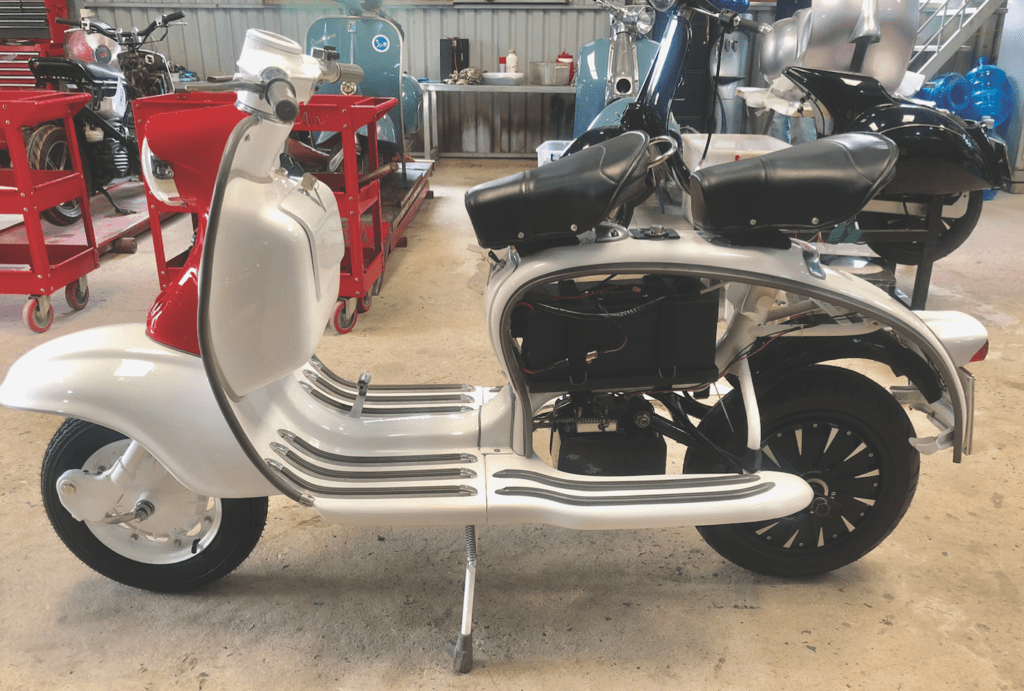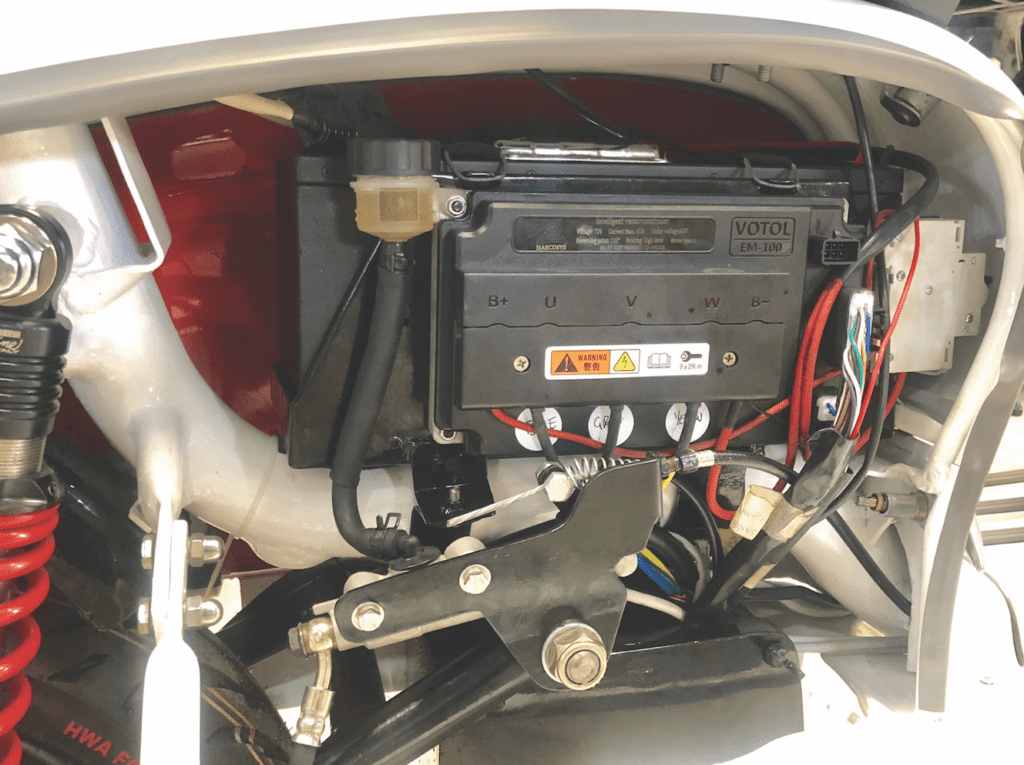He’s best known to the trade for Saigon Scooter Centre’s massive range of remade classic scooter parts but Pat Joynt’s long been an advocate for electronic vehicles.

Anyone that’s visited Asia knows that the only thing bigger than the market for two-wheelers is the pollution they produce. The holy grail of transportation there, and indeed the rest of the world, is a clean, efficient and stylish city bike. It’s a project that Pat’s been enthusiastically working on for more than a decade.
In addition to his purpose-built and classically styled Buzz e-scooter, Pat’s been offering conversions for both Lambretta and Vespa frames for some years. These first-generation kits are effective in use but difficult to install. As is the case with most other conversions on the market, they also require modification to the frame. By no means could they be described as ‘plug and play’.

As the demand for electric vehicles now seems to be insatiable, Pat’s revisited the project and can now unveil his latest prototype, the ‘EBretta’. As Pat explained: “The big difference between this and any other kit on the market is that it uses the existing loom and cables. The installation can be completely reversed in a couple of hours.” He went on to explain: “The only modified part is a new rear mudguard as the original has to be trimmed slightly to accommodate the larger rear wheel. The replacement uses the existing mounts, is supplied with the kit and works perfectly with the original 10-inch wheel.”

Assembly
The first stage is to remove the original engine, tank, air and tool boxes. After this, the new battery base plate, together with the junction and storage box, are fastened to the central frame tube, no drilling or welding being required. The swingarm, hub motor and wheel can then be fitted using the original shock absorber and the lithium battery is mounted using quick-release straps. Power is supplied to ancillaries via the existing loom using the kit’s adaptor cable. The rear brake is a semi-hydraulic system that’s activated by the standard foot-pedal and existing cable. This same principle applies to the throttle control, which is again operated by the standard cable. Obviously the clutch and gear cables need to be tidied away and the kit takes care of this by neatly concealing them inside a junction box. Finally there’s an external charging plug with a battery level monitor fitted into the fuel flap and an ignition switch for that can be fitted to machines which still retain their kill button.

Riding and range
Creating an electronic vehicle is relatively straightforward; the critical issues are charge time, range and performance. The EBretta is fitted with a 72v/30amh lithium-ion phosphate battery unit, which is a rough equivalent to 125/150cc. When mated to the 72v 3000W brushless hub motor it has an empty to full charge time of around five hours, a range of 60-70km and a top speed of around 70mph. “We’re not claiming that this is anything other than a city bike,” said Pat. “The important part of the project has been establishing that a classic scooter can be converted quickly and reversibly. As battery technology improves so will range and ultimately I’d like to see a conversion that’s truly capable of touring – but that’s a long way off for any manufacturer.” The conversion has already attracted trade attention and an announcement about the British distributor can be expected once prices are finalised. There’s understandable scepticism among enthusiasts about the viability of electric two-wheelers but there’s no doubt that they’ll be part of our future. The EBretta offers the advantages of both fossil and green fuels in a package that’s acceptable to most scooterists. Surely that can be no bad thing?
Stan



